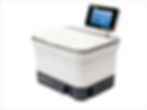How to ensure ultrasonic cleaners meet UK guidance requirements.
- Nov 27, 2022
- 3 min read
Firstly, let’s clarify the difference between testing and validation. Validation is a way of confirming that decontamination equipment is working in the way the manufacturer intended. Validation also demonstrates that the equipment complies with the CE-marking process, under the terms of the Medical Devices regulations (MDR); and that all instruments cleaned by the equipment, are done so reliably and consistently.

According to UK guidance, practitioners must have their equipment validated and serviced annually, by an accredited engineer. Nowadays most service contracts offered will include an element of validation.
In addition, when you purchase decontamination equipment, there are certain tests that you, as the end user, must complete to ensure that the physical conditions required for decontamination and sterilisation, are always achieved.
Unit De-Gas & Water change
Every time that the unit is filled with fresh water and detergent it is important to run a de-gas cycle before full use. The fresh water & detergent will contain oxygen bubbles which will interfere with the cavitation of the unit and inhibit its ability to clean effectively.
The water and detergent solution needs to be changed at the end of every clinical session or more often if visibility dirty.
Protein residue tests
On a weekly basis, ultrasonic baths must undertake protein residue tests to determine if any residual protein remains on the dental instruments. The bath will contain RO or distilled water, along with a cleaning solution - enzymatic or otherwise, as recommended by the manufacturer.
At the end of the cleaning cycle, a random instrument should be taken from the bath, rinsed ideally with RO or distilled water, then swabbed for protein residue. If the instrument passes this test, all instruments may be moved to the next stage of reprocessing.
Visual inspection
Every single instrument that goes through reprocessing should be visually inspected under an illuminated magnifier, before it moves on to the next stage. If any visible debris is found, those instruments must go back through the cleaning process.
Ultrasonic activity test
On a quarterly basis, there are two tests that need to be carried out. The first is a foil ablation test (or standard foil test), also known as the ultrasonic activity test. This test determines that every possible area of the ultrasonic bath has cavitation happening within it.
Once the foil is in place, the bath should be run on a standard cycle, or a time determined by the manufacturer. Once completed, the foil is removed and blotted dry, and then inspected for cavitation. This will appear as little perforations in the foil.
The foil should be cross-referenced with that of the previous quarter to make sure that the perforations are in the same place, or as close as they were previously. If they are not, or there are no perforations, this is an indication that cavitation is not taking place in that part of the bath. These foil pieces should then be stored in a logbook, for reference in the following quarter.
Cleaning efficacy test
The cleaning efficacy test is the second quarterly test and is also known as the soil test. This is a manufacturer-led test, and not a UK Guidance requirement. The cleaning efficacy test requires the use of a PCD (Process Challenge Device) and CEI (Chemical Efficacy Indicator). The latter test employs the use of an indicator, which is normally painted red. This goes inside the PCD and then into the ultrasonic bath. After a predetermined time (manufacturer dictated), the indicator is removed and there should be no visible red left on it, which is an indication that the cleaning efficacy is satisfactory. Some manufactures state this should be a monthly test, so always check first.

Safety checks
You should regularly carry out safety checks to ensure that there is no damage to the bath; the inner chamber is in good order, the lid closes properly and there is no visible damage externally. These checks need to be documented and kept for a minimum of two years, in order to satisfy CQC or local inspectorate requirements.

